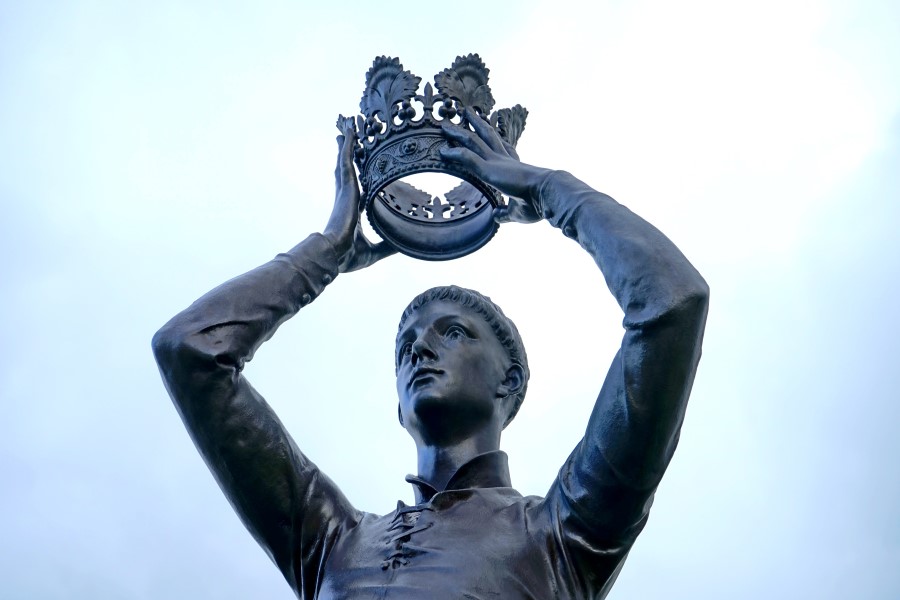There are 44 countries in the world that are monarchies. Historically, almost every society in the world has been ruled by a king. We all know kings become monarchs because the crown is passed down through a royal family. But the first king can’t have been the son of a previous king? There must have been someone at the beginning who became the first monarch? How did the first kings become king?
The first kings became king either by a tribal ruler establishing themselves as a monarch over land their tribe already ruled, by conquering new lands and proclaiming themselves as the king, or by changing a nations political system to make themselves the first king.
…but that’s just an overview. Really, how the first king became a monarch is much more complicated. Let us explain.
How Did The First Kings Come To Power?
The first question we need to ask to understand how the first kings became king is how the first monarchs came to power. Really, there are three ways the first kings got their positions. These were:
- Tribal leaders becoming king
- By conquering new land
- Changing a political system
Let’s go over each of these…
Tribal Leaders Becoming King
One way it is likely the first kings became monarchs was by being leaders of their tribes. Human beings were mostly nomadic until about 12,000 years ago. When societies began to form that occupied land, and farming became a crucial part of the how people sourced food, it is likely that tribal leaders became kings in order to govern their societies and organise for their defence.
Historically, tribes would have had a group of elders who led the societies. The leader was likely to be the top elder. When the first kings emerged, these tribal elders likely agreed for the leader to become the king.
An example a tribal leader who became king is Clovis I – the German tribal leader who established the Kingdom of France in 481.
By Conquering Land
A second way that the first kings would have become king was by conquering new land. When a lord or noble within a society led an army and took over a new piece of territory, they would likely have installed themselves as the ruler there. Some conquered lands may have been extensions of previous territories and ruled by their kings, however in many cases the one conquering the new land broke away from the old kingdom and established their own monarchies on the newly conquered land.
An example of a monarch becoming the first king by conquering the land is King Athelstan of England in 924. Athelstan was the first King of England. He established the monarchy by conquering the land from the Vikings and consolidating the country under his rule.
Changing A Political System
Another way that monarchs could have come about was by someone taking over a society that had a different political system and making themselves king. An example of this was Julies Caesar, who took over ancient Rome in 46 BC and changed it from being a Republic to being an Empire with himself as Emperor.
How Did The First King Of A Dynasty Become King?
The second question we need to ask regarding how the first monarchs became rulers is how new dynasties were started. A royal dynasty is a succession of rulers from the same ancestry. Essentially, this is how new royal families become monarchs, as opposed to how the first king of country became its ruler.
Really, new kings of a dynasty became kings in four different ways. These were:
- End of a line of succession
- Overthrowing the current king
- Invitation from a new nation
- Appointed by colonial power
Now let’s look at each of these in-turn…
End Of A Line Of Succession
One way that kings of a new dynasty became kings was because of the end of a line of succession. Crowns are passed down through royal families. But, if a king does not have any eligible children, then there is an end of the line of succession.
When royal lines of successions end, historically there has often been conflicts. These have often involved many claimants to the throne warring to take control. The winner of the conflict would become king and establish a new royal dynasty. An example of this was Henry XII of England, who came to power following the War of Roses in 1485. Henry’s victory over Richard III in the conflict allowed him to establish the House of Tudor as England’s new ruling dynasty.
Overthrowing The Current King
A second way that royal dynasties started was by someone overthrowing a monarch from a different household and installing themselves as king. An example of this was in 1066 when William the Conqueror invaded England and defeated King Harold Godwinson at the Battle of Hastings. William established a new royal dynasty that ruled England after his victory.
Invitation From A New Nation
A third way that the first king of a dynasty could become king was by being invited to lead a newly created nation. There have been instances when new countries have been formed, their elites have looked around for a suitable person to become king. This is often as a figure-head and uniting figure for the new nation. Usually, the person invited to become king has a historical connection to the country and is already a member of a royal family elsewhere. However, when they are installed as the king of the new nation, they often establish a new royal dynasty.
An example of a royal dynasty being started by invitation because of the creation of a new country is Haakon VII of Norway. Originally a Danish prince, he was installed as King of Norway in 1905 following the country’s split from Sweden and a plebiscite that saw him invited to become king.
Appointed By Colonial Powers
A final way that a king of a new dynasty could become king was by being appointed. This was common during the period of European colonial rule. Many countries had monarchs installed by their colonial powers. Often these kings where elites within their societies that could be placed in charge but still be partially loyal to the colonial country.
An example of a king that was installed by a colonial power and were the first kings of their nation was King Faisal I of Iraq. The British government, which held a mandate for Iraq, were concerned about unrest in their colony. They installed Faisal I as king in 1921 to provide direct rule to the country whilst still giving them significant control.

Who Made The First Kings A King?
A question that is often asked relating to how the first kings became king is who made the first monarchs royal?
The first kings likely made themselves kings based on their ruling positions within tribal societies. Other leaders within the tribe would likely have agreed that the ruler assumed the role of king. There may already have been a hereditary system of rulers in place.
Although no king can rule without the consent of their people, almost all monarchs throughout history have been dictatorships. The elite of a society may have some say in who takes over the throne, but generally societies throughout history were ruled by the person who could command the most troops and seize power.
It is likely the first kings took control because they were in positions of power within their societies and had the means to takeover and rule.
Tribal societies, which were often nomadic, had leaders. Once these tribes began to settle and acquire land, the tribal leaders likely took the role of monarchs as a way to govern the society and ensure its defence.
How Did The First Queens Become Queen?
Finally, we’ve looked at kings and how the first king in a line of succession came to power. But what about queens? How would the first queen have become a monarch?
The first queen likely became queen because they were the oldest daughter of the ruling king upon their death. The first queen could also have come to power by marrying the king of a country, and assuming power from them.
Although it is possible the first queens came to their thrones through conquest, tribal leadership, or by taking over previous political systems and installing themselves as queens, the patriarchal nature of most historical societies makes this unlikely.
Think of the most famous queens in history – Elizabeth I or Queen Victoria of England, or even Cleopatra of ancient Egypt – all came to power by being in the line of succession.
Elizabeth I became queen when her half-sister, Mary I, died in 1558. She was next in-line to the throne in the Tudor household – the ruling family of England in the 16th Century. Queen Victoria came to power in 1837 because there were no legitimate male heirs in the British royal family to take the throne. Cleopatra became queen as she was the brother of the previous ruler of ancient Egypt. Upon his death, she was helped to the throne in 51 BC by her then lover, Julius Caesar of Rome.
Although all these queens came to power as part of established dynasties, it shows that most queens became queen by being next in-line to the throne. This is likely how the first queens became monarchs.
Another way the first queens could have become queens was by marrying kings and taking over their rule.
Catherine The Great of Russia became queen by launching a successful rebellion against her husband, Peter III in 1762. Empress Dowager Cixi of China became the ruler of the country when the Xianfeng Emperor died. Although technically throughout her reign, Empress Dowager Cixi was regent to young male emperors who were too young to rule, in fact she ruled China as empress from 1861 to 1908.


